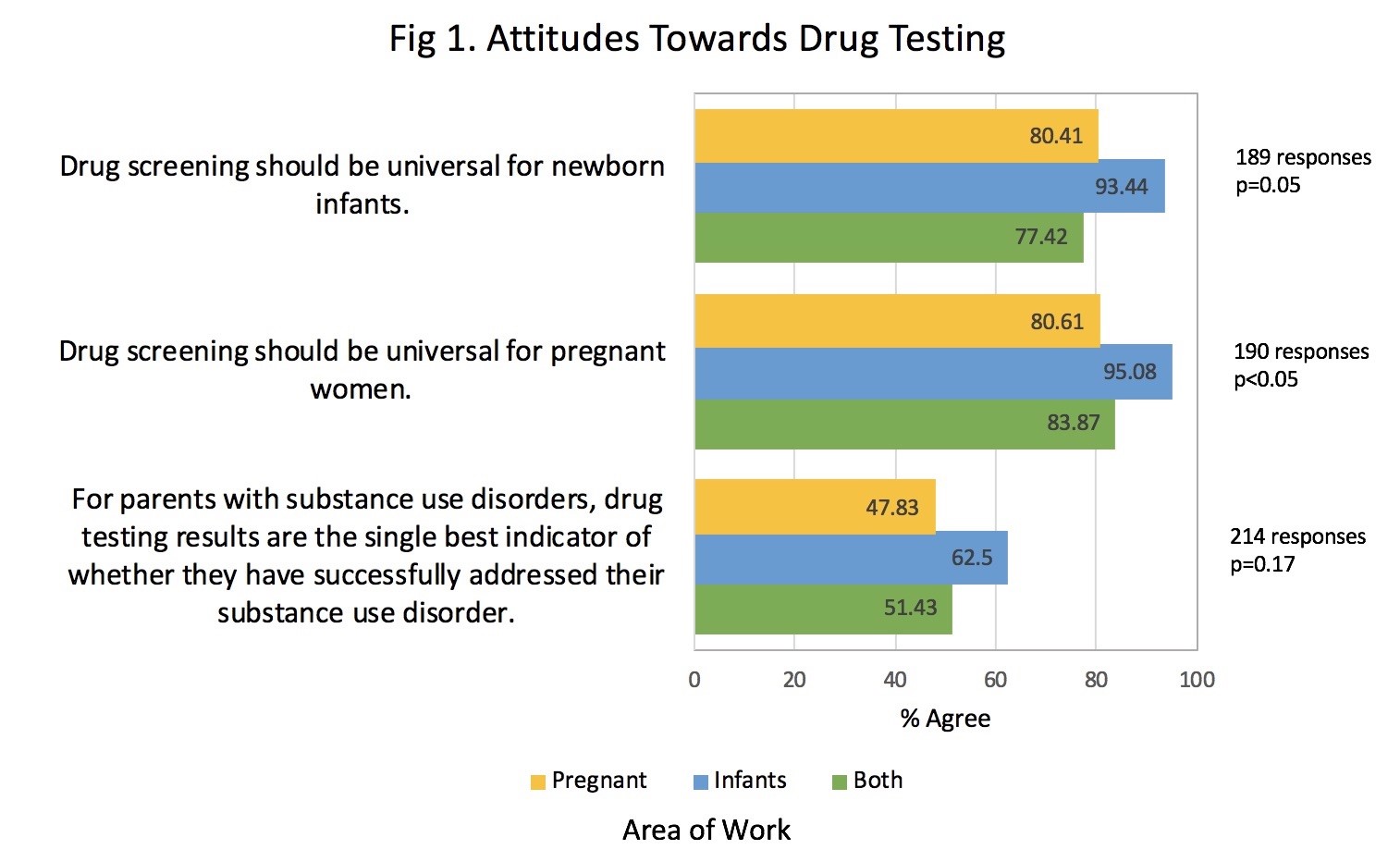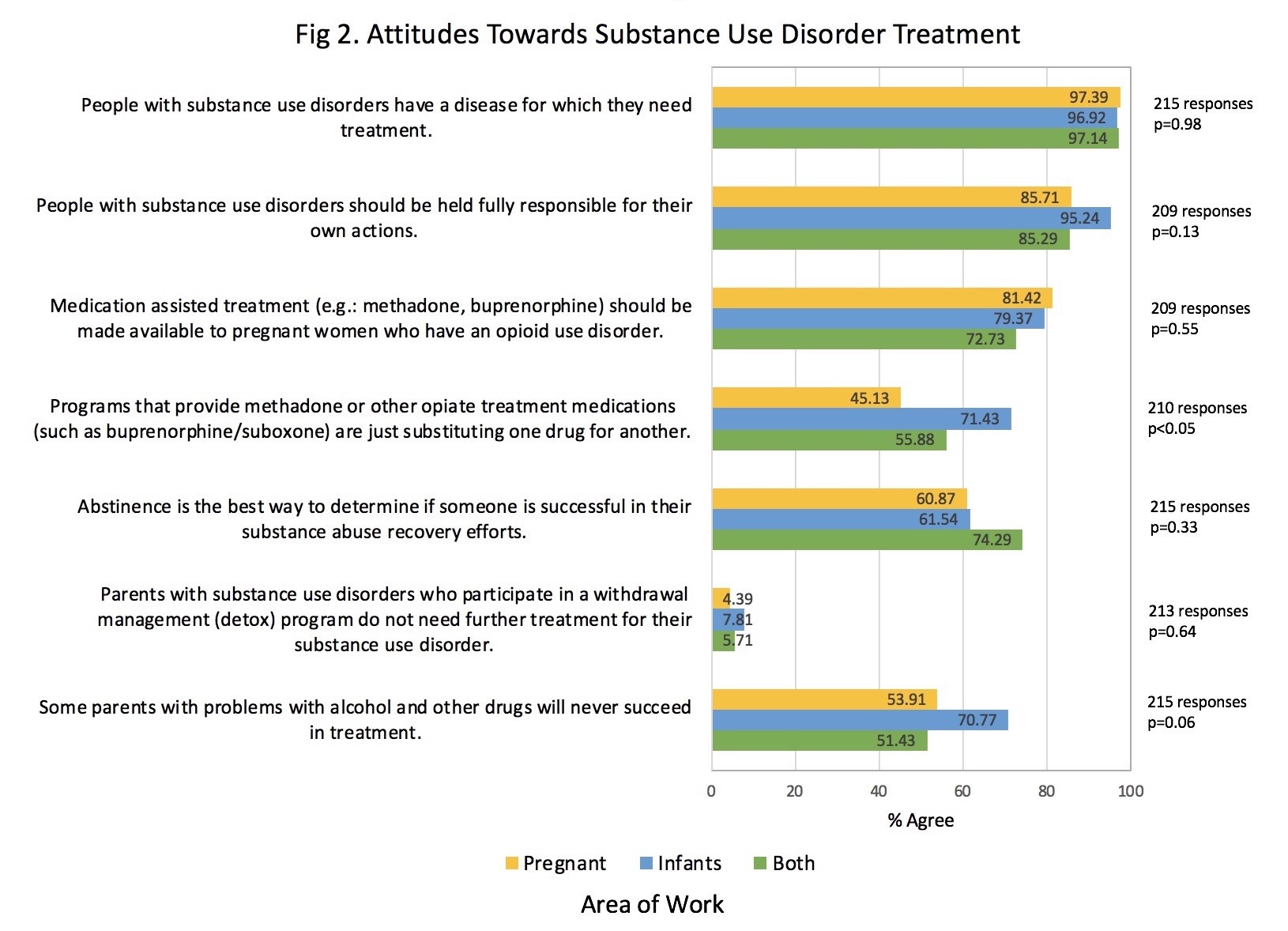Title:
Attitudes towards substance use disorder in pregnancy differs whether providers work with women or infants
Authors:
Margaret A. Williams, Suzanne Muir, Lauren Padalino, Brian M. Casey, William M. Perez, Sara Mazzoni, Lorie M. Harper
Background:
- Patients with substance use disorder (SUD) are vulnerable to stigmatization in the healthcare system.
- Stigma associated with SUD leads to delayed care and worse health outcomes.
- SUD during pregnancy may be associated with increased social and legal penalties including felony charges and loss of custody.
- Previous ACOG committee opinions have:
- cited the adverse health outcomes of policies used to criminalize SUD during pregnancy
- discouraged parent-child separation that is based solely on SUD
- addressed obstetrician-gynecologists’ responsibility to advocate for and refer patients to comprehensive substance misuse treatment programs
Specific Aims:
- To examine hospital staff attitudes towards SUD during pregnancy.
- To analyze differences in attitudes by whether staff work with perinatal women, infants, or both.
Methods:
- The Collaborative Values Inventory from the National Center on Substance Abuse and Child Welfare was distributed to inpatient and outpatient providers and staff at a tertiary care center for women and infants.
- Self-reported interaction with pregnant, postpartum, or newborn patients was a criterion for participation.
- The 57-item survey addressed drug testing, parenting, child removal/reunification, treatment/relapse, and SUD as a disease.
- Staff were classified based on their self-reported area of work:
- Pregnant: Antepartum, Labor, Maternity Evaluation, or Outpatient units
- Infants: Neonatal Intensive Care Unit or Continuing Care Nursery
- Both: Mother-Baby or Multiple units
- Groups were compared using chi square tests or analysis of variance (ANOVA) as appropriate.
Results:
- 942 staff received the Collaborative Values Inventory
- 243 (26%) responded
- Baseline Characteristics (Table 1):
-
- Respondents in all areas of work were predominantly female (92.6% of total).
- Staff working with infants were more likely to identify as white than those working with pregnant women.
- Staff working with infants reported more years of experience than those working with perinatal women.
|
Table 1. Baseline Characteristics |
|||
|
Percentage (%) |
|||
|
Pregnant |
Infants |
Both |
|
|
n=135 |
n=171 |
n=37 |
|
|
Age |
|||
|
<25 |
8.9 |
11.3 |
13.5 |
|
25 – 34 |
45.2 |
40.9 |
16.2 |
|
35 – 44 |
21.5 |
18.3 |
24.3 |
|
45 – 54 |
17.8 |
21.1 |
27.0 |
|
55 – 64 |
3.7 |
8.5 |
10.8 |
|
>65 |
2.2 |
0 |
2.7 |
|
Gender |
|||
|
Female |
90.4 |
94.4 |
97.3 |
|
Male |
8.2 |
4.2 |
2.7 |
|
Other/Prefer not to say |
1.5 |
1.4 |
0 |
|
Race |
|||
|
Black |
27.4 |
12.7 |
37.8 |
|
White |
67.4 |
84.5 |
56.8 |
|
Other/Prefer not to say |
5.2 |
2.8 |
5.4 |
|
Ethnicity |
|||
|
Non-Hispanic |
94.1 |
95.8 |
91.9 |
|
Hispanic |
4.4 |
2.8 |
2.7 |
|
Prefer not to say |
1.5 |
1.4 |
5.4 |
|
Average Years of Experience |
|||
|
9.8 |
11.8 |
14.6 |
|
- Attitudes towards Drug Testing (Fig 1):
-
- The majority of respondents, regardless of work area, endorsed universal drug screening of pregnant women and infants.
- Staff interacting with pregnant patients were significantly less likely to support universal drug testing.
Figure 1
- Perception of Competency
-
- Staff working with infants were more likely to report competency in working with or on behalf of substance using populations (75.8%) compared to staff working with pregnant patients (52.5%).
- Parenting
-
- The majority of respondents across all areas agreed that people with SUD can be effective parents (67.1% of total).
- The majority of respondents across all areas agreed that babies who test positive for illegal drugs, or prescription medications not prescribed to their mother, should be removed from parental custody (81.4%).
- Attitudes towards SUD Treatment (Fig 2):
-
- The majority of respondents agreed that SUD is a disease and pharmacotherapy should be available to pregnant women.
- Staff working with infants were more likely to view pharmacotherapy as substituting one drug for another.
- Staff working with infants were more likely to believe some parents will never succeed in treatment.
Figure 2
Conclusions:
- The majority of hospital staff recognized SUD as a disease.
- Responses highlight discrepancies in perception of the need for pharmacotherapy and indications for drug screening.
- Educational efforts should be targeted based on providers’ area of work in order to decrease stigma associated with SUD and improve treatment for pregnant/postpartum women and their infants.